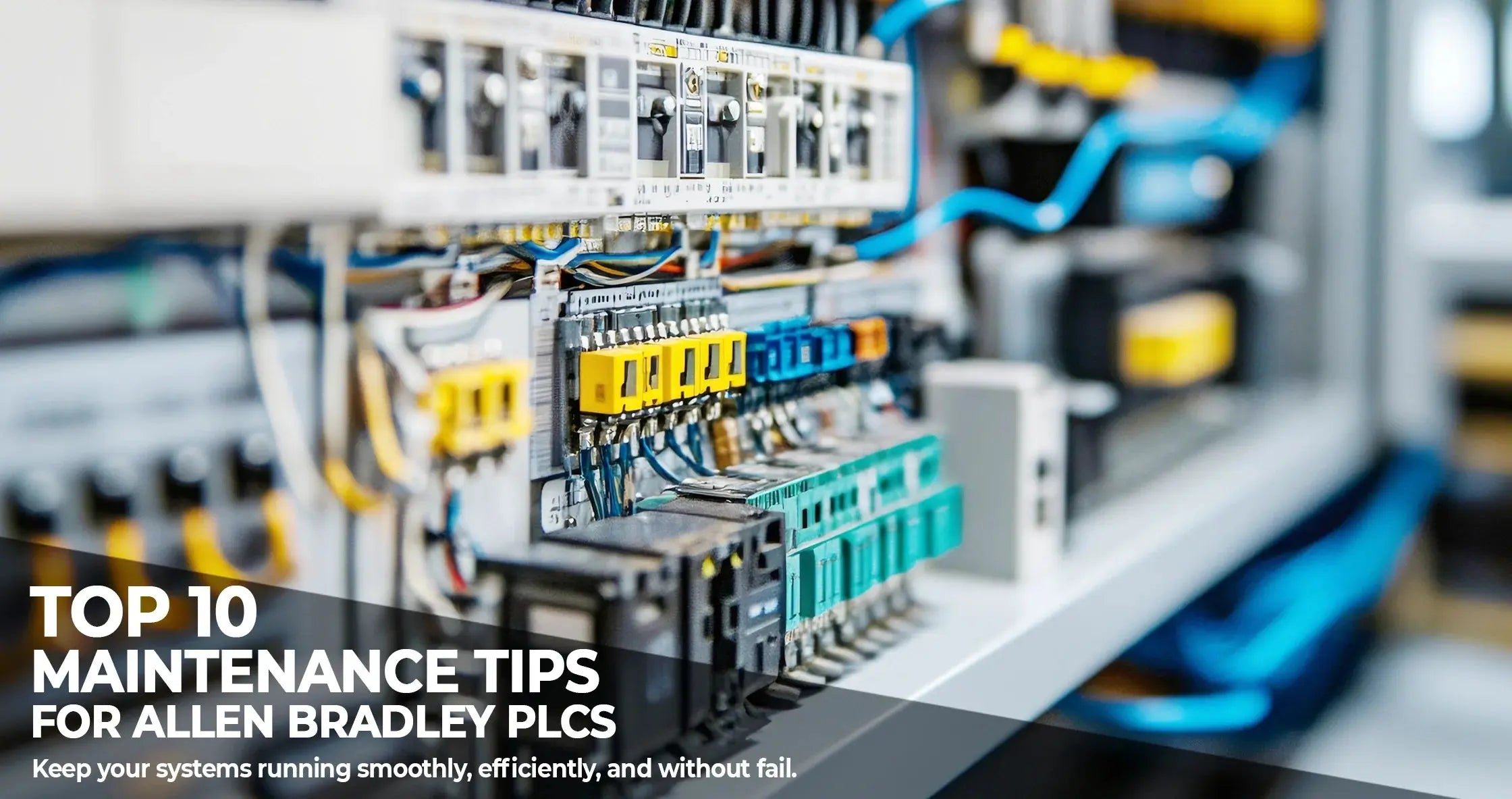Maintaining Allen Bradley PLC equipment is essential for ensuring smooth industrial operations. By following best practices, engineers can optimize system performance, minimize downtime, and extend the life of their Allen Bradley PLCs.
Understanding the Importance of Allen Bradley PLC Maintenance
Why Maintenance Matters
All Allen Bradley PLC systems require regular maintenance to function optimally. Without proper care, these devices may experience performance issues or even fail entirely. Regular upkeep ensures that all components remain in good condition.
For instance, dust accumulation inside a MicroLogix 1400 controller could lead to overheating. Preventive measures like cleaning can prevent such problems from occurring.
Key Benefits of Routine Maintenance
Routine maintenance offers several advantages, including:
- Improved system reliability
- Reduced unplanned downtime
- Lower repair costs over time
- Prolonged equipment lifespan
Creating a Comprehensive Maintenance Schedule
Developing an Effective Plan
A well-structured maintenance schedule should include both preventive and corrective actions. This includes tasks such as inspections, testing, calibration, backups, and troubleshooting. Allocating sufficient time and resources ensures that all necessary steps are completed thoroughly.
For example, engineers might inspect electrical connections weekly while performing firmware updates quarterly. Tailoring schedules based on specific needs helps maximize efficiency.
Scheduling Tips for Success
Here are some tips for creating an effective maintenance schedule:
- Set clear objectives for each task
- Prioritize high-risk areas first
- Incorporate feedback from past experiences
- Review and adjust plans regularly
Performing Regular Inspections and Cleanings
Checking Key Components
Regular inspections involve examining critical parts of the Allen Bradley PLC system, such as I/O modules, wiring harnesses, terminals, and more. Look for signs of wear, corrosion, or damage during these checks.
Cleaning also plays a vital role in preventing issues caused by dust buildup. Use compressed air carefully to remove debris without causing harm to sensitive components.
Best Cleaning Practices
To clean your Allen Bradley PLC effectively:
- Power down the device completely
- Use a soft cloth for exterior surfaces
- Avoid using water directly on electronics
- Check manufacturer guidelines for additional advice
Updating Firmware and Software Regularly
Why Updates Are Crucial
Keeping firmware and software up-to-date ensures that your Allen Bradley PLC operates at peak performance levels. New versions often contain important fixes, security enhancements, and feature improvements.
Before updating, always back up existing programs to avoid losing critical data. Test new versions thoroughly before deploying them widely across systems.
Steps for Safe Updates
Follow these steps when updating Allen Bradley PLC software:
- Verify compatibility with current hardware
- Download official updates only
- Create a backup copy of the current setup
- Install updates during scheduled downtimes
Training Personnel and Documenting Activities
Importance of Proper Training
Training personnel on proper Allen Bradley PLC maintenance techniques reduces human error risks significantly. Ensure team members understand basic troubleshooting methods, safety protocols, and emergency procedures.
Encourage ongoing learning through workshops, manuals, and online resources provided by Rockwell Automation.
Documenting Maintenance Tasks
Keep detailed records of all maintenance activities performed on Allen Bradley PLCs. These logs help track progress, identify recurring issues, and plan future interventions better.
Consider adopting digital tools like CMMS (Computerized Maintenance Management Systems) to streamline documentation processes further.
Conclusion: Maximizing Your Allen Bradley PLC Investment
By adhering to these top 10 Allen Bradley PLC maintenance practices, engineers can ensure their systems remain reliable and efficient throughout their lifespans. From establishing comprehensive schedules to staying informed about technological advancements, proactive approaches yield significant benefits.
We encourage readers to explore our product collection page for Allen Bradley PLCs to find solutions tailored specifically for their unique requirements.
Explore Related Product Collections
Looking to enhance your Allen Bradley PLC maintenance setup? Explore our curated product collections designed to help you maintain, upgrade, and expand your automation systems with reliable components and accessories.
Allen-Bradley Collection →
Discover genuine Allen-Bradley products including PLC modules, communication cards, power supplies, and accessories. Perfect for engineers and maintenance teams looking to ensure compatibility and high performance across industrial systems.
Automation & PLC’s Collection →
Browse a wide range of automation and PLC components ideal for building efficient control systems. From input/output modules to industrial controllers, find everything you need to streamline your automation processes.
Motor Control Equipment →
Maintain precise control and protection of motors with our selection of motor starters, contactors, overload relays, and other essential control devices. Ideal for ensuring smooth operation and reliability in every production environment.
Frequently Asked Questions About Allen Bradley PLC Maintenance
How Often Should I Perform Maintenance?
The frequency depends on factors like usage intensity and environmental conditions. Generally, perform visual inspections weekly, test program logic monthly, and conduct full reviews annually.
What Tools Do I Need for Maintenance?
Essential tools include multimeters, contact cleaners, compressed air cans, and appropriate communication cables. Software tools like RSLogix 5000 or Studio 5000 assist with programming and diagnostics.
Can I Repair My Own Allen Bradley PLC?
While minor repairs may be possible, it's recommended to seek professional assistance for complex issues. Attempting advanced repairs yourself could worsen problems or void warranties.


